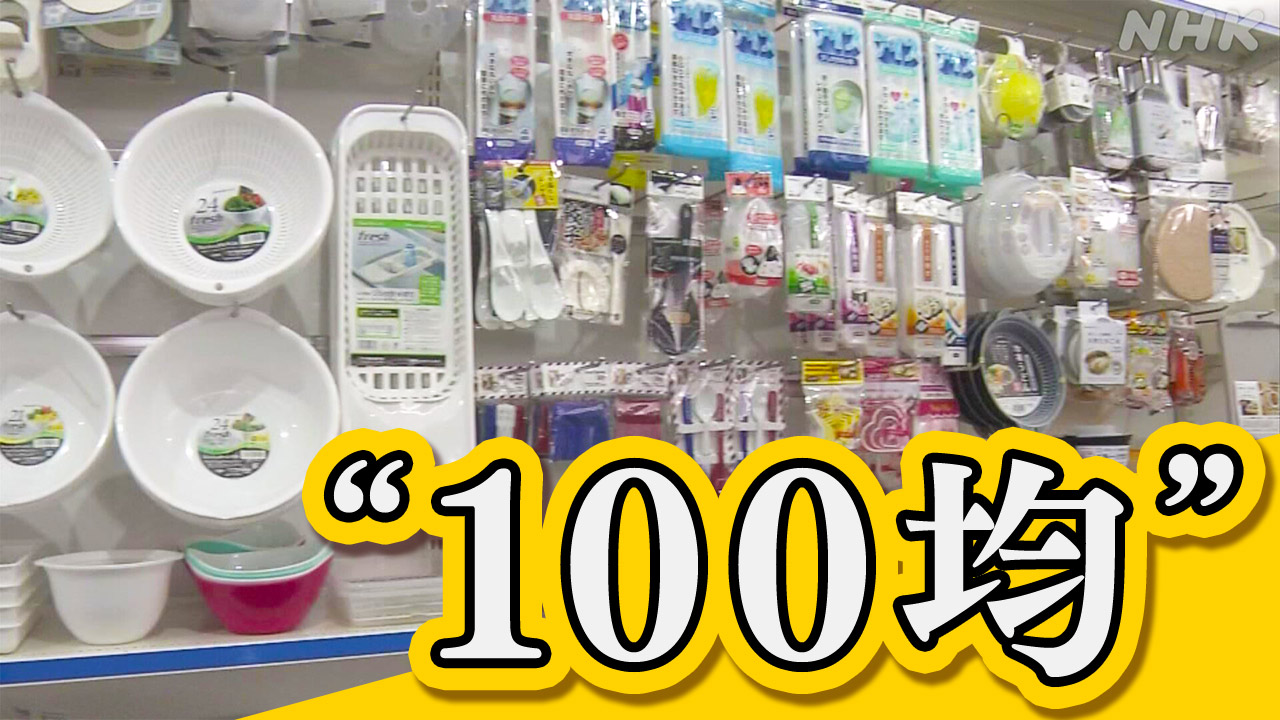Prices that remain “unchanged” even when prices rise: The struggles of “100 yen” manufacturers March 13, 17:03
``Will we be able to continue to pay 100 yen in a situation where all costs are going up?''
said the manager of a company that manufactures kitchen utensils and storage boxes for 100 yen shops, with a troubled expression on his face.
The company's current focus is on developing value-added products and expanding sales channels to 300-yen shops and other locations.
As a company that has played a role in an industry that sells products such as ``100 yen'' and ``prices that remain the same,'' we thought about changes in the Japanese economy such as rising prices.
(Economy Department reporter Koki Nishizono)
Manufacturer's predicament
Last fall, the headline ``A wholesaler of daily necessities for 100-yen stores has applied for application under the Civil Rehabilitation Act'' was posted on the website of the research firm Teikoku Databank.
The reason is that profits have deteriorated due to increases in raw material and labor costs.
As someone in charge of the Bank of Japan, covering the price situation, I was curious about this information, so I inquired about it.
They found that at least six wholesale companies that primarily deal with 100-yen shops have gone bankrupt since 2022, when prices began to rise.
Although we were unable to directly contact the person in charge of the bankrupt company, we were able to hear from several companies that wholesale their products to 100-yen shops.
We heard comments such as ``We are delivering fewer products because we can't add on purchasing prices,'' and ``We can't pass on the price any further.''
It appears that many business owners are suffering due to price constraints.
Expanding sales channels beyond 100 yen uniform
One of these companies offered me an interview, so I visited their headquarters in Osaka.
Sanada Group manufactures and sells plastic kitchen utensils and storage boxes for 100 yen shops.
Established 50 years ago, the company employs over 130 people.
Faced with rising prices for naphtha, the raw material for plastics, and soaring transportation costs, efforts were made to keep costs down in product development and on the factory floor, as prices could not be changed.
For example, there is a basket for A4 documents that sells 300,000 pieces a month at peak times.
Although the cost has increased by 20% compared to 2021, it is difficult to pass on that cost, so we reduced the size by lowering the height by 1.5 cm.
However, there were limits to these cost-cutting efforts, and the company was forced to discontinue production of rice polishing bowls and bread storage containers.
Meanwhile, President Sanada has begun revising the company's strategy in line with the times.
For example, we are considering changing the lids of plastic boxes for small items to wooden ones.
Natural warmth, he thought, would sell the product.
In addition to 100 yen shops, we are accelerating the expansion of our sales channels to 300 yen shops and home centers.
In fact, three years ago, almost all of the products were sold at 100-yen stores.
As prices continued to rise, employees were focusing on creating products that added value rather than cutting costs.
In an era of rising prices
This interview made me think about the meaning of ``prices not changing.''
I was impressed by the attitude of the wholesale company's employees, who continue to innovate at each stage of purchasing, product development, and manufacturing for 100-yen shops.
President Sanada says, ``As a manufacturer, I find it rewarding to develop products with particular attention to grams and centimeters in order to stay within a fixed price.''
On the other hand, he also analyzes that ``100 yen shops matched the lost 30 years when the economy was suffering after the bursting of the bubble economy.''
President Sanada
: "I'm worried about how long we can stay in this price range. Labor costs are going up every year, and logistics costs are going up as well. With all costs going up, will we be able to stay at 100 yen going forward? ”
He revealed his true feelings.
Looking back, in Japan after the bubble burst, there was a widespread awareness among companies that ``prices would not change'' and ``prices would not change.''
Even if costs went up, the management's ability to cut back was the best part.
However, it is also pointed out that the accumulation of these movements and the acceleration of the direction of ``lowering prices'' led to a deflationary economy.
On the other hand, the prices of various goods and services are rising.
Bank of Japan Governor Ueda also stated in the Diet, ``We are currently in a state of inflation, not deflation.''
100 yen shops are a valuable asset to consumers, and I hear that even in America, where inflation continues, the 1 dollar store format remains.
However, if you look around you, you won't see many canned coffees priced at 100 yen in vending machines anymore, and you won't see many izakaya menus where all items are under 300 yen.
As the Japanese economy undergoes changes such as rising prices, what will happen to the mindset that ``prices will not change'' and what will happen to industries where ``prices will not change'' as a matter of course?
I want to continue thinking about this.
(Broadcast on “Good Morning Japan” on March 1st)
Economic Affairs Department reporter
Koki Nishizono Joined the Bureau
in 2014
After working at the Oita Bureau,
he was in charge of the Economic Affairs Department's financial industry.In
order to understand the price situation, he checks the price tags and menus at any store he enters.

